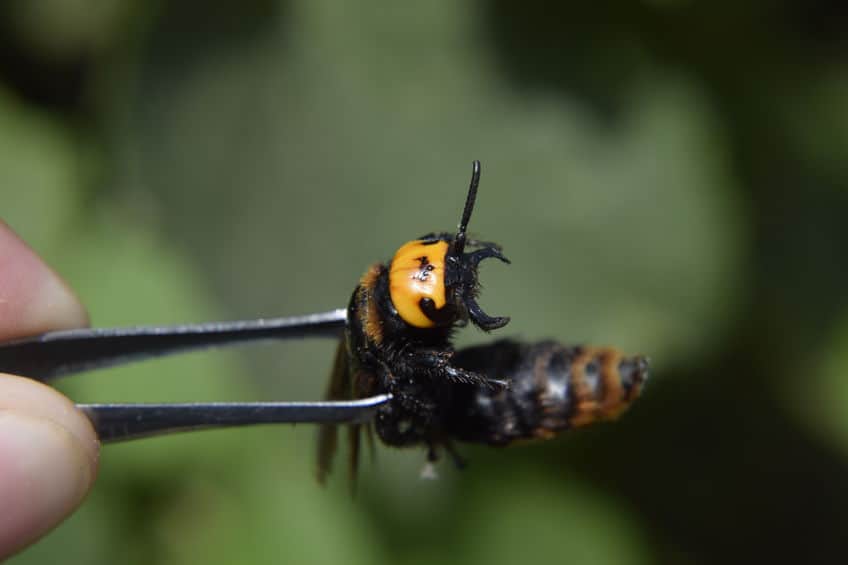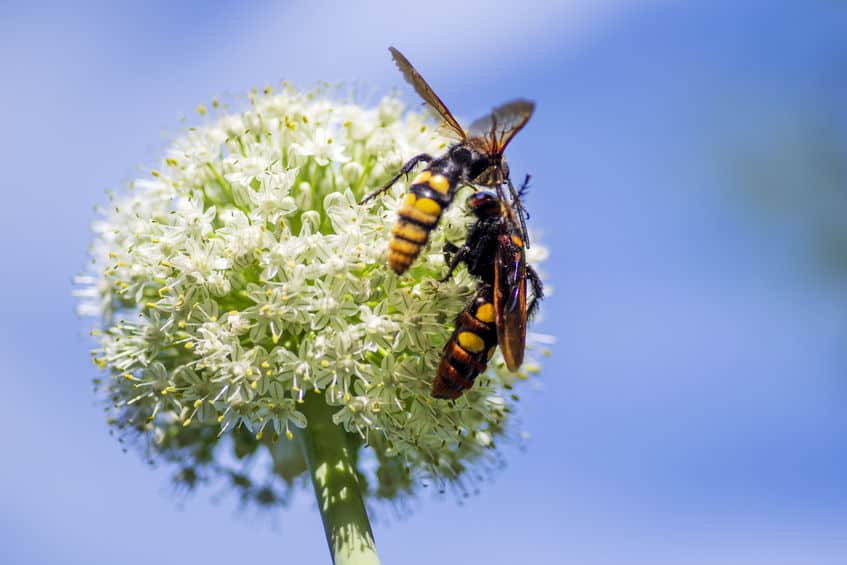The mammoth wasp, Megascolia maculata, is a solitary wasp found in Mediterranean regions of Europe.
How did the mammoth wasp get its name?
They are the largest wasp in Europe. The mammoth wasp is a large wasp at 2.4 inches (6cm) in length. This makes them not only the largest wasp in Europe but one of the largest in the world. The size of the wasp is largely dependent on the quality of nutrition they get as a larva, and these wasp larvae feed off large nutrient-dense grubs.

What do mammoth wasps prey on?
The prey of choice for the mammoth wasp is the European rhinoceros beetle. The rhino beetle is Europe’s largest beetle so it makes sense that they are prey for the largest wasp. In fact, it can’t survive without this beetle so they are only found in habitats with rhino beetles.
It is the grubs of these beetles that they are after. They specialize in capturing the rhino beetle grubs, paralyzing them with their sting, and taking them back to their nests as food for their offspring. The mammoth wasp will prepare a burrow and lay a single egg next to the captured rhino grub. When hatched the wasp larva will then eat the grubs alive. They start by eating the grub from the outside before drilling into the wasp to finally consume it from the inside out.
Only the wasp larvae consume the grubs with the adult wasps consuming mostly nectar, they are attracted to a variety of nectar-rich flowers and play a role in pollination.

Are mammoth wasps a threat to people?
While the mammoth wasp is a danger for rhino beetles it is of no harm to people. Their size may be intimidating but they are solitary wasps so are never found in large numbers and their habitats are in forests, not urban areas. Unlike other types of wasps that have evolved painful stings to ward off predators, this wasp uses its sting primarily as a means of paralyzing the rhino beetle grubs. The sting is only moderately painful to humans, despite its size.
How do mammoth wasps survive winter?
The adult mammoth wasps do not survive, but the larvae weave a cocoon to survive winter. After feeding on the rhino grubs the mammoth wasp larva will enter the next stage in its development. Forming a pupa they create a reddish cocoon and ride out the winter in their burrows. In the spring they will claw their way out of the burrow and mate before the cycle begins again.
Do male and female mammoth wasps look different?
The males and females have different color heads. The male and female mammoth wasps are easy to tell apart. The females have bright yellow heads and the males have black heads. The females are also larger than the males, and as with all wasps, the males are unable to sting. The females armed with their stinger hunt and build nests and lay eggs, the male’s role is to mate with the females. They have shorter life cycles than the females and will live for only a few weeks. The females will survive for a few months.
